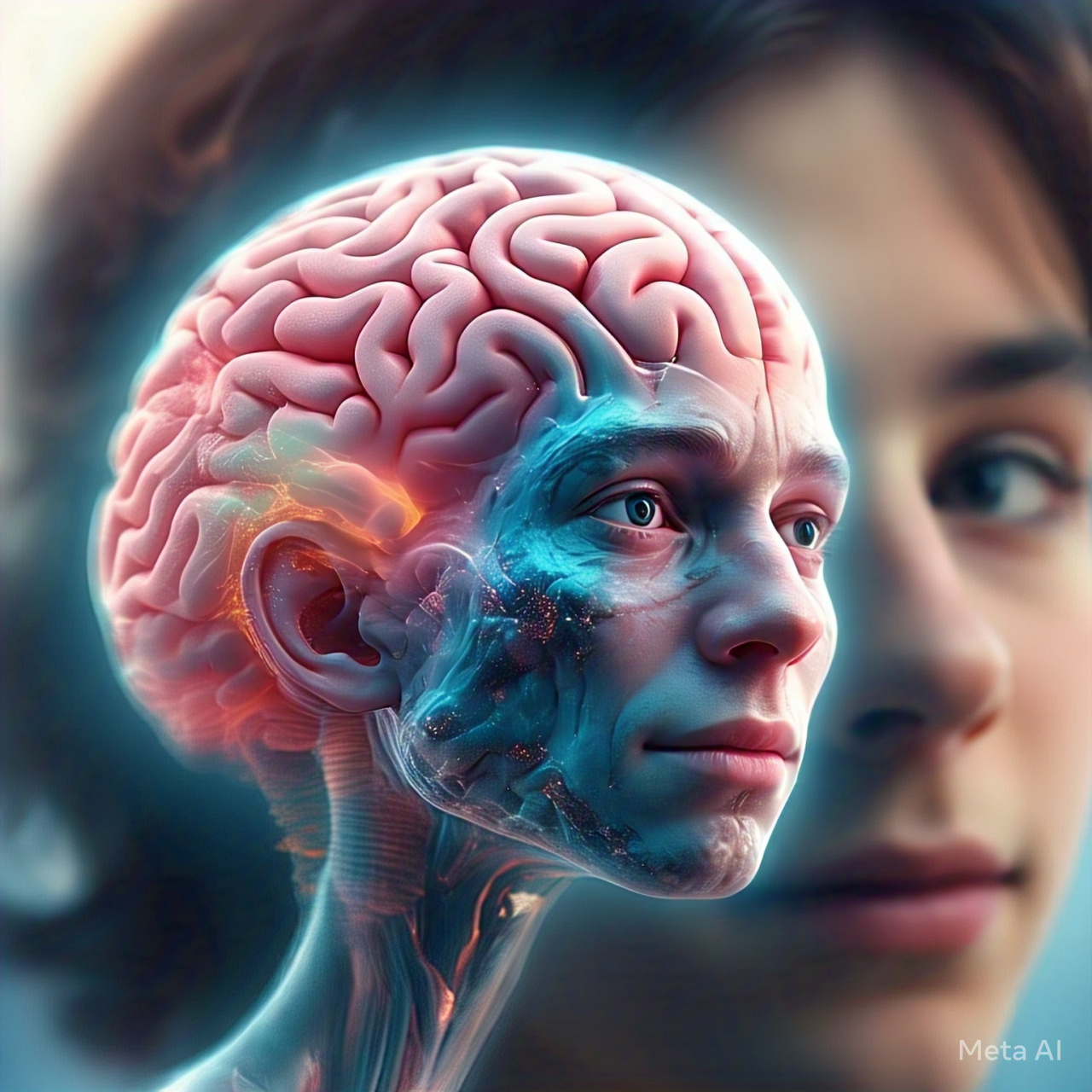Table of Contents
- Introduction
- The Science of Brain Development in Adolescents
- Key Differences Between the Teenage Brain and the Adult Brain
- The Role of Hormones in Teenage Behavior
- Risk-Taking and Decision-Making in Adolescents
- Emotional Regulation and the Teenage Brain
- Social Influences and Peer Pressure
- The Impact of Sleep on Teenage Brain Function
- Mental Health in Adolescence
- Supporting Healthy Brain Development in Teenagers
- Conclusion
- FAQs
1. Introduction
Adolescence is often described as a turbulent period filled with emotional highs and lows, risky behavior, and shifting relationships. Parents, teachers, and society at large frequently struggle to understand why teenagers behave the way they do. Modern neuroscience, however, is shedding light on the complex processes taking place inside the teenage brain, providing valuable insights into adolescent behavior.
This article explores the science behind teenage brain development, explains the reasons for common adolescent behaviors, and offers guidance on supporting teens during this critical phase of life.
2. The Science of Brain Development in Adolescents
The human brain undergoes significant development from childhood through adulthood. One of the most remarkable periods of brain growth occurs during adolescence. Contrary to the belief that brain development ends in early childhood, scientists now know that the brain continues to mature into a person’s mid-20s (Giedd, 2004).
During adolescence:
- The prefrontal cortex, responsible for decision-making, planning, and impulse control, is still developing.
- The limbic system, involved in emotion and reward processing, becomes highly active.
- Neuroplasticity allows for significant learning and adaptability.
MRI studies reveal that gray matter density peaks during early adolescence and declines later due to synaptic pruning—a process that strengthens essential neural connections while eliminating unnecessary ones (Blakemore & Choudhury, 2006).
3. Key Differences Between the Teenage Brain and the Adult Brain
Prefrontal Cortex Development
The prefrontal cortex governs logic, reasoning, and impulse control. Since it is still under construction in teens, they are more likely to act impulsively and make decisions without fully considering long-term consequences (Casey, Getz, & Galvan, 2008).
Heightened Limbic System Activity
The limbic system matures earlier than the prefrontal cortex, resulting in increased emotional intensity and sensitivity to rewards and peer approval (Steinberg, 2005).
4. The Role of Hormones in Teenage Behavior
Hormonal changes during puberty influence both physical development and emotional regulation. Increased levels of testosterone and estrogen affect mood swings, aggression, and sexual behavior. These hormones also interact with the brain’s reward systems, amplifying risk-taking behaviors (Sisk & Foster, 2004).
5. Risk-Taking and Decision-Making in Adolescents
Teenagers often engage in risky activities, from extreme sports to experimenting with drugs and alcohol. This behavior is linked to:
- An underdeveloped prefrontal cortex, limiting risk assessment.
- A dopamine surge in the brain’s reward centers, which heightens the thrill associated with novel experiences (Luciana & Collins, 2012).
Risk-taking plays an adaptive role in exploring boundaries and gaining independence, but it can also lead to dangerous outcomes.
6. Emotional Regulation and the Teenage Brain
Teenagers often experience intense emotions due to:
- The overactivity of the amygdala, which processes fear and aggression.
- Immature connections between the amygdala and the prefrontal cortex, impairing emotional regulation (Yurgelun-Todd, 2007).
This can lead to mood swings, outbursts, and heightened sensitivity to stress.
7. Social Influences and Peer Pressure
Adolescents are highly influenced by their social environment. Peer acceptance becomes a top priority, sometimes outweighing parental or educational guidance (Brown & Larson, 2009).
Peer pressure can encourage positive behaviors, like academic achievement or sports participation, but it can also push teens toward risky or harmful actions. Social media further amplifies this influence by offering immediate feedback on social status.
8. The Impact of Sleep on Teenage Brain Function
Sleep is critical for brain development, yet many teenagers do not get enough rest. Changes in circadian rhythms during adolescence lead to a natural tendency for teens to stay awake later and sleep longer (Crowley, Acebo, & Carskadon, 2007).
Sleep deprivation negatively impacts:
- Memory and learning
- Emotional regulation
- Decision-making abilities
- Mental health (Owens et al., 2014)
Educators and parents can help by encouraging good sleep hygiene and advocating for later school start times.
9. Mental Health in Adolescence
Adolescence is a vulnerable time for developing mental health disorders. According to the World Health Organization (WHO, 2021), half of all mental health conditions begin by age 14.
Common issues include:
- Depression
- Anxiety
- Eating disorders
- Substance use disorders
Early intervention, supportive relationships, and professional help are key in promoting mental well-being.
10. Supporting Healthy Brain Development in Teenagers
Parents, educators, and communities can play a vital role in supporting teens’ brain health.
Promote Positive Risk-Taking
Encourage safe exploration through sports, creative arts, and travel.
Foster Emotional Intelligence
Teach teens to identify and manage their emotions constructively.
Provide Structure and Boundaries
Clear expectations and consistent rules help teens develop self-regulation.
Encourage Healthy Relationships
Positive peer and adult relationships provide essential support and guidance.
Support Mental Health
Recognize the signs of mental health challenges and connect teens with professional help when necessary.
11. Conclusion
Understanding the teenage brain allows us to better appreciate the unique challenges and opportunities that adolescence presents. By recognizing the neurological underpinnings of teen behavior, we can offer more compassion, guidance, and support to help teenagers transition successfully into adulthood.
As science continues to uncover the complexities of adolescent brain development, parents, teachers, and caregivers are better equipped to foster environments that encourage healthy growth, learning, and emotional resilience.
12. FAQs
Q1. Why do teenagers take more risks than adults?
Teenagers engage in more risk-taking due to an underdeveloped prefrontal cortex and heightened activity in the brain’s reward system, making them more sensitive to peer approval and immediate gratification (Steinberg, 2008).
Q2. How does sleep affect the teenage brain?
Sleep is crucial for memory consolidation, emotional regulation, and cognitive functioning. Sleep deprivation in teens can lead to poor academic performance and increased mental health issues (Owens et al., 2014).
Q3. At what age does the teenage brain fully develop?
The brain continues developing into the mid-20s, particularly the prefrontal cortex, which is responsible for judgment, planning, and impulse control (Giedd, 2004).
Q4. How can parents help their teenagers manage emotions?
Parents can model healthy emotional expression, provide a safe space for open communication, and teach coping strategies for dealing with stress and intense feelings.
Q5. What role do peers play in teenage decision-making?
Peers greatly influence adolescent behavior, both positively and negatively. Peer approval can increase risky behaviors but also motivate positive achievements (Brown & Larson, 2009).
References
- Blakemore, S. J., & Choudhury, S. (2006). Development of the adolescent brain: Implications for executive function and social cognition. Journal of Child Psychology and Psychiatry, 47(3-4), 296-312. https://doi.org/10.1111/j.1469-7610.2006.01611.x
- Brown, B. B., & Larson, J. (2009). Peer relationships in adolescence. In R. M. Lerner & L. Steinberg (Eds.), Handbook of adolescent psychology (pp. 74–103). Wiley.
- Casey, B. J., Getz, S., & Galvan, A. (2008). The adolescent brain. Developmental Review, 28(1), 62-77.
- Crowley, S. J., Acebo, C., & Carskadon, M. A. (2007). Sleep, circadian rhythms, and delayed phase in adolescence. Sleep Medicine, 8(6), 602-612.
- Giedd, J. N. (2004). Structural magnetic resonance imaging of the adolescent brain. Annals of the New York Academy of Sciences, 1021(1), 77-85.
- Luciana, M., & Collins, P. F. (2012). Incentive motivation, cognitive control, and the adolescent brain: Is it time for a paradigm shift? Child Development Perspectives, 6(4), 392-399.
- Owens, J. A., Drobnich, D., Baylor, A., & Lewin, D. (2014). School start time change: An in-depth examination of school districts in the United States. Mind, Brain, and Education, 8(4), 182-213.
- Sisk, C. L., & Foster, D. L. (2004). The neural basis of puberty and adolescence. Nature Neuroscience, 7(10), 1040-1047.
- Steinberg, L. (2005). Cognitive and affective development in adolescence. Trends in Cognitive Sciences, 9(2), 69-74.
- Steinberg, L. (2008). A social neuroscience perspective on adolescent risk-taking. Developmental Review, 28(1), 78-106.
- World Health Organization (WHO). (2021). Adolescent mental health. https://www.who.int/news-room/fact-sheets/detail/adolescent-mental-health
- Yurgelun-Todd, D. (2007). Emotional and cognitive changes during adolescence. Current Opinion in Neurobiology, 17(2), 251-257.




